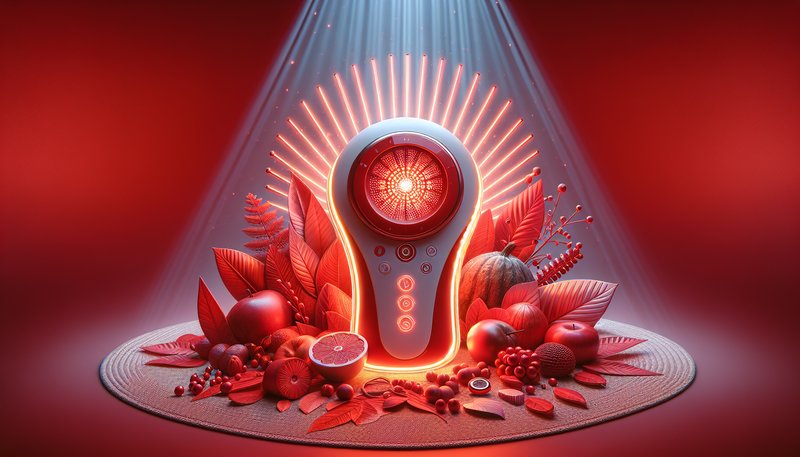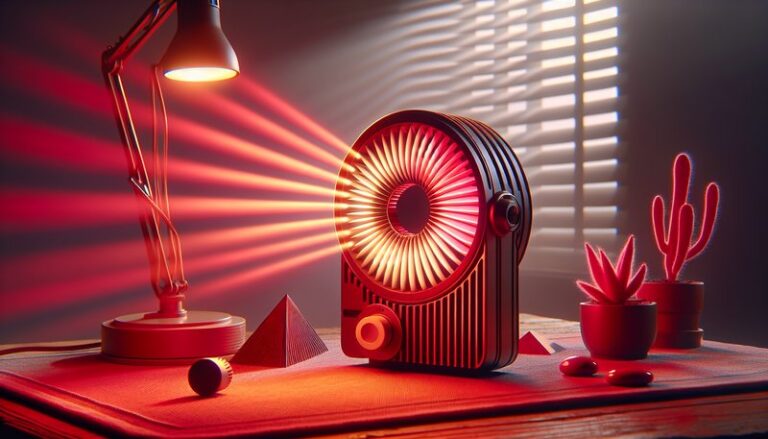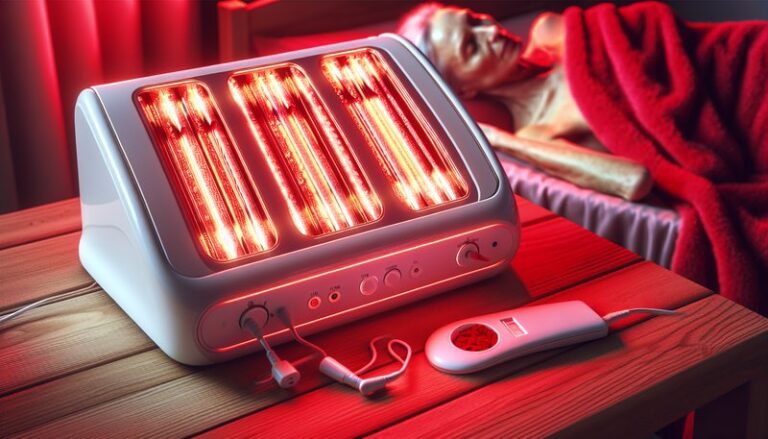Does Red Light Therapy Burn Fat?
Are you looking for new ways to shed those stubborn pounds? If so, you may have heard of red light therapy and its potential benefits for fat loss.
Get informed with Can Red Light Therapy Damage Eyes?
This article will delve into the science behind red light therapy, explore its benefits, discuss its effectiveness in burning fat, and consider alternatives. By the end, you’ll have a clearer understanding of whether this treatment may be a viable option for your weight loss journey.
Key Takeaways
- Red light therapy promotes cellular function and may assist in fat loss through improved metabolism.
- While studies show some promise, more research is needed to firmly establish the efficacy of red light therapy for weight loss.
- Consider other weight loss methods and consult professionals before starting any new treatment regimen.
What is Red Light Therapy?
Red light therapy (RLT), also known as low-level laser therapy (LLLT), involves the use of red or near-infrared light to stimulate cellular function. The therapy is believed to increase ATP (adenosine triphosphate) production in cells, enhancing their energy and function. This process can lead to various health benefits including improved skin health, reduced inflammation, and accelerated healing processes.
The therapy works by penetrating the skin’s layers, targeting cells and tissues directly, which can promote healing and metabolic processes. RLT is often administered through devices such as LED panels or handheld lasers, which deliver concentrated wavelengths of light to the skin’s surface.
What are the Benefits of Red Light Therapy?
Red light therapy offers several benefits that make it attractive not only for weight loss but for overall wellness. Here are some key advantages:
Promotes Metabolic Function
Research suggests that red light therapy can enhance metabolic processes within fat cells, leading to increased fat oxidation. By improving cellular energy production, RLT may support the body’s ability to burn fat more efficiently.
Supports Muscle Recovery
RLT is renowned for its ability to enhance muscle recovery after exercise. Improved recovery can lead to better workout efficiency, potentially aiding in weight loss and fat reduction as more intense workouts can be sustained over time.
Reduces Inflammation
Chronic inflammation is linked to several health conditions, including obesity. Red light therapy has been shown to reduce inflammation in various body tissues, creating a healthier environment for weight loss.
Is it Possible to Burn Fat with Red Light Therapy?
While there is evidence to suggest that RLT may play a role in fat oxidation, it’s essential to understand that it is not a standalone solution for weight loss. Red light therapy should be viewed as a potential supplement to a balanced diet and regular exercise rather than a replacement.
What are the Advantages of Using Red Light Therapy for Fat Loss?
The use of red light therapy offers several advantages in the context of fat loss:
Non-Invasive Treatment
Unlike surgical options, RLT is non-invasive and typically involves minimal discomfort. This makes it an attractive option for individuals looking to improve their body composition without going under the knife.
Versatile Application
RLT can be applied in different settings, whether at home with devices or in professional clinics, providing users with flexible options for their treatment plans.
Time Efficient
Sessions typically last only 10 to 30 minutes, making RLT a time-efficient choice for those with busy schedules who still want to work on fat reduction.
What are the Disadvantages of Using Red Light Therapy?
While there are advantages, it’s important to consider some potential downsides:
Limited Research
Current research into RLT’s effectiveness for fat loss is limited. While initial studies show promise, more robust clinical trials are needed to substantiate these claims.
Costly Investment
High-quality red light therapy devices can be expensive. Regular treatments, especially at clinics, can quickly add up, which may not fit every budget.
Variable Results
Individual responses to RLT can vary significantly. Not everyone may experience the same level of benefits, which can lead to frustration and disappointment.
What are the Things to Consider Before Using Red Light Therapy?
Before starting red light therapy, it is vital to consider the following factors:
Consult a Professional
It’s crucial to consult with a healthcare provider or a licensed practitioner who is knowledgeable about RLT to ensure it is appropriate for your specific health needs and goals.
Set Realistic Expectations
Understanding that RLT should be a part of a comprehensive approach to weight loss—including a balanced diet and regular exercise—is essential. It isn’t a quick fix.
Safety Precautions
Be aware of potential skin sensitivities and ensure that any device used is FDA-approved or follows regulatory standards to ensure safety and effectiveness.
What are the Alternatives to Red Light Therapy for Fat Loss?
If red light therapy doesn’t seem like the right fit for you, there are several alternatives to consider:
Traditional Exercise
Engaging in regular physical activity, including cardio and strength training, is a proven method for burning fat and improving overall health.
Nutritional Adjustments
Adopting a balanced diet with an appropriate caloric deficit and nutrient-dense foods can significantly impact weight loss and fat reduction.
Cryotherapy
This treatment involves exposure to extremely cold temperatures to promote fat loss. Cryotherapy is believed to enhance metabolic rates and burn calories.
Conclusion: Is it Recommended to Use Red Light Therapy for Fat Loss?
In conclusion, while red light therapy presents several potential benefits and offers an intriguing approach to fat loss, it is essential to remember that it should not be relied upon exclusively for weight management. Combining RLT with a healthy diet and regular exercise may lead to better results. As always, consult with a healthcare professional before starting any new treatment.
Frequently Asked Questions
Can red light therapy be used for other health benefits?
Yes, red light therapy has been researched for various benefits, including skin rejuvenation, pain relief, and enhancing muscle recovery.
How many sessions of red light therapy are recommended?
The recommended number of sessions can vary, but many practitioners suggest 2-4 sessions per week for optimal results, particularly during the initial treatment phase.
Is red light therapy safe for everyone?
Generally, red light therapy is safe for most individuals. However, those with certain medical conditions, such as skin disorders or photosensitivity, should consult their healthcare provider before starting.
What results can I expect from red light therapy?
Results can vary based on individual factors such as body composition, lifestyle, and adherence to a healthy regimen. Some users report noticeable changes within several weeks.
Get all the facts in Does Red Light Therapy Tan You?
Are there any side effects associated with red light therapy?
Red light therapy is typically associated with few side effects. However, potential side effects may include skin irritation or sensitivity, though these are rare. Consulting a professional for guidance can mitigate risks.






